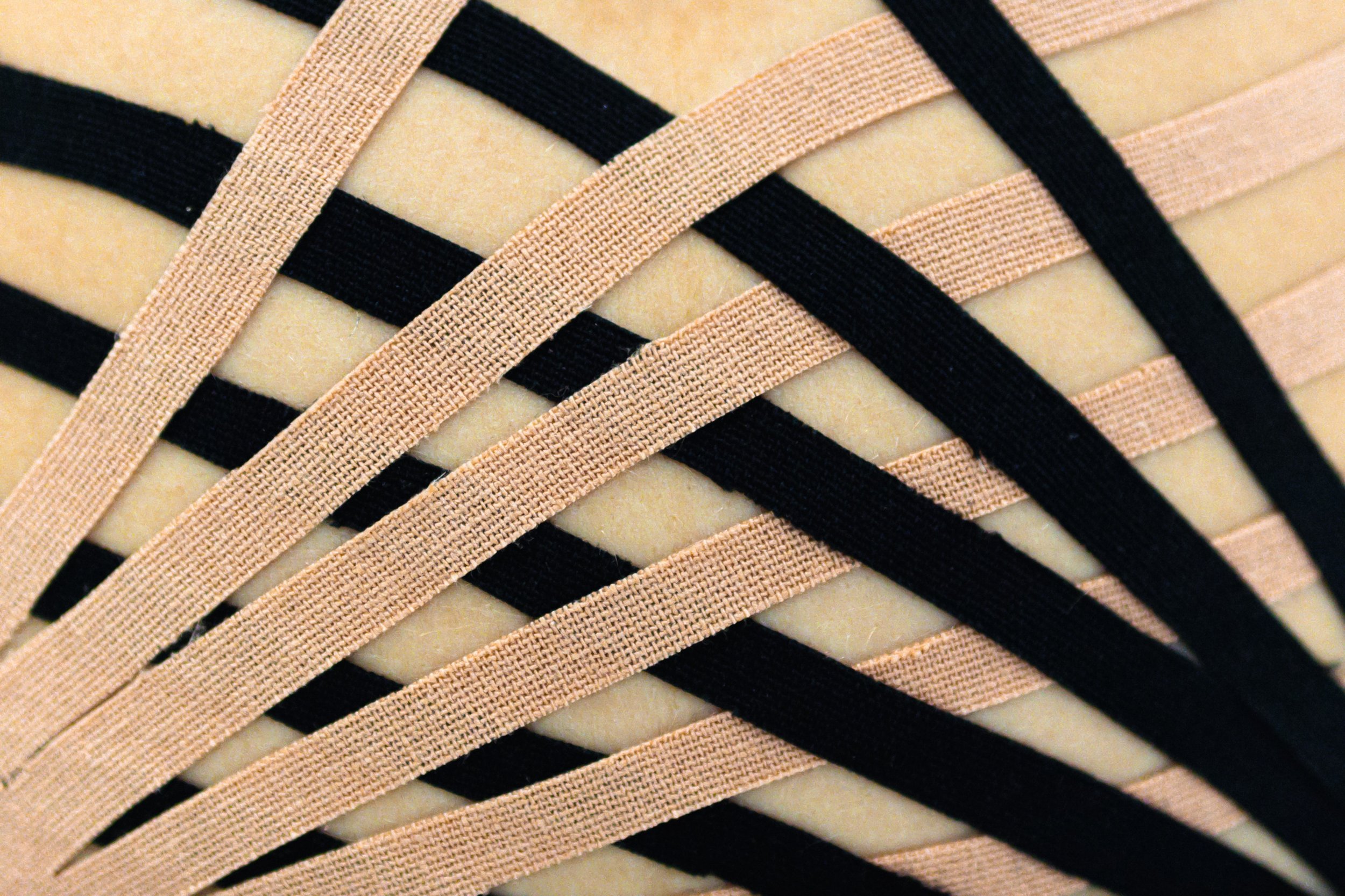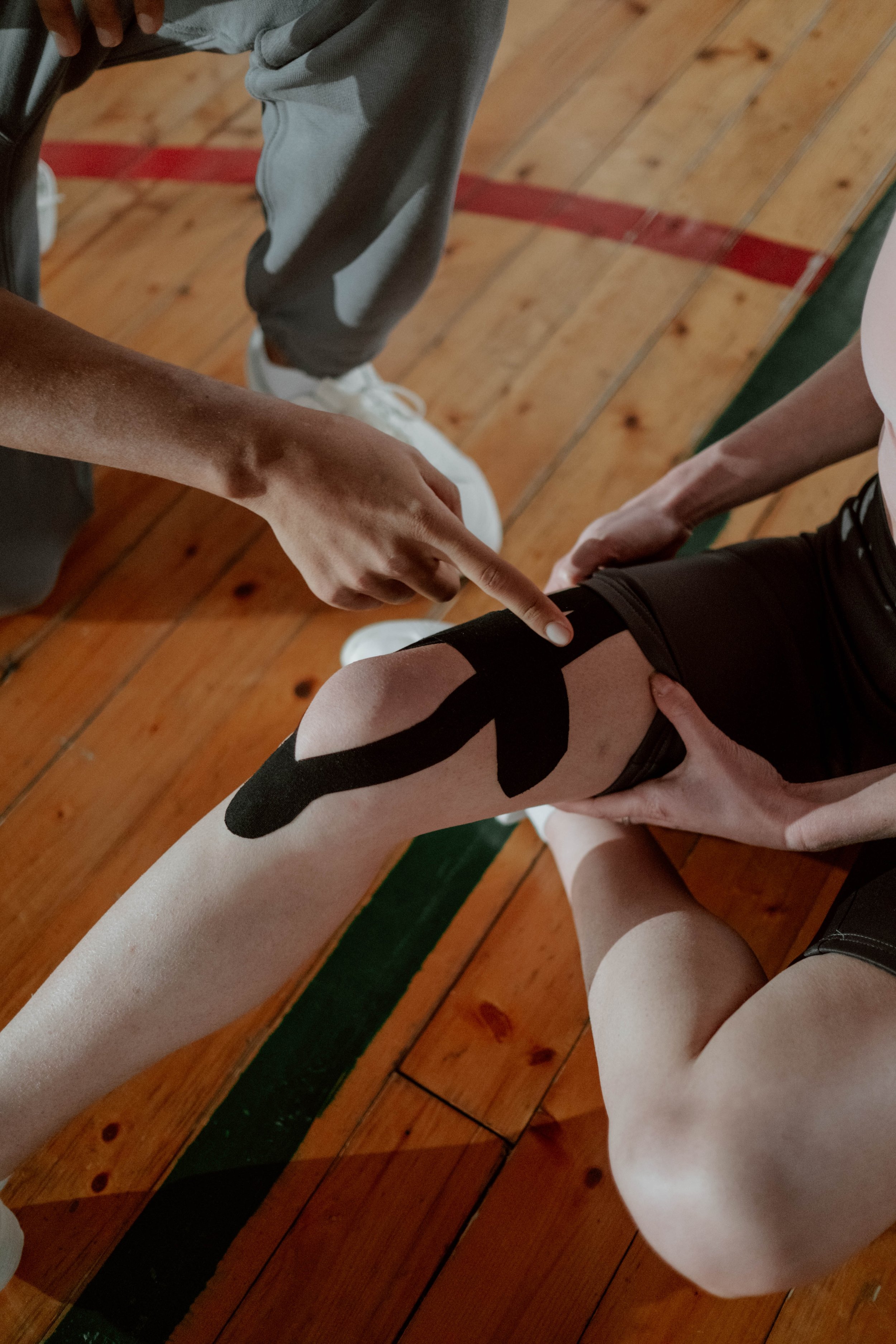Are you an athlete looking to enhance your performance or someone recovering from an injury? If so, then you’ve probably heard of the revolutionary method called Kinesio Taping also known as KT tape. Whether you’re an athlete or someone seeking recovery, find out how Kinesio Taping can unlock your potential and help you reach your goals.

The Revolutionary Kinesio Taping Method
This innovative taping technique offers a range of benefits, including pain relief, improved circulation, and increased range of motion. By applying the adhesive tape correctly using different techniques, athletes and patients have experienced remarkable results. Case studies and success stories attest to the effectiveness of this therapeutic tape, which was developed by Dr. Kenzo Kase in the 1970s. Its water-resistant and latex-free properties make it suitable for a wide range of individuals. Tips for proper application ensure maximum effectiveness.
Understanding the Concept of Kinesio Taping
Kinesio taping is a therapeutic technique that involves the application of a special elastic tape to the body. The tape mimics the elasticity and thickness of human skin, allowing for a full range of motion. It can be used to support injured muscles or joints, reduce pain and inflammation, improve circulation, and enhance performance. Applied in specific patterns and tensions, it promotes muscle activation and provides structural support. Athletes, physical therapists, and healthcare professionals commonly use kinesio taping to aid in the recovery process and optimize performance.
The Science Behind Kinesio Taping
Kinesio taping is a therapeutic method that utilizes elastic therapeutic tape to provide support for muscles and joints, promote healing, and enhance performance. This tape is specifically designed to mimic the properties of human skin, allowing individuals to maintain a full range of motion while still receiving the necessary support and stability. By lifting the skin and creating space between the muscle and underlying tissue, kinesio taping helps to reduce pain and inflammation. The application of the tape can be customized based on the specific needs of the individual, targeting different muscle groups or joints. From athletes to patients, kinesio taping has been widely used in various sports and rehabilitation settings, with reports of improved pain relief, increased mobility, and faster recovery times.

The Unique Properties of Kinesio Tape
Kinesio tape, a type of tape, possesses unique properties that make it an essential tool in the world of sports medicine and physical therapy. One of its key features is elasticity, as it is designed to stretch and move with the body, allowing for a full range of motion during activities. Additionally, the tape is made from breathable materials, ensuring proper air circulation and preventing moisture buildup. Another standout quality is its skin-friendly adhesive, which is gentle and does not cause any irritation or discomfort. By providing muscle support and pain relief, kinesio tape aids in reducing strain and promoting healing. Furthermore, it can be utilized in rehabilitation programs to enhance recovery and improve athletic performance.
How Does Kinesio Tape Mimic Human Skin?
Kinesio tape, also known as kt tape, mimics the human skin by matching its thickness and elasticity. The hypoallergenic and latex-free adhesive minimizes skin irritation. Its unique wave pattern allows breathability and flexibility, similar to the skin. This enables kinesio tape, or kt tape, to provide support, reduce pain, enhance muscle function, and aid in the management of lymphedema.

Four Major Functions of Kinesio Taping
Kinesio tape serves four major functions in the realm of physical therapy and sports medicine. Firstly, it provides effective pain relief by offering support and reducing pressure on injured or overused muscles. Secondly, it enhances muscle activation and stability, making weak or fatigued muscles more resilient and less prone to injuries. Additionally, kinesio tape improves circulation and lymphatic drainage, aiding in faster healing and reducing swelling. Lastly, it boosts proprioception by providing sensory feedback to the brain, thereby improving body awareness, coordination, and overall movement efficiency. The use of Kinesio tape can be particularly beneficial in the treatment of tendon injuries.
Supporting the Muscle
Supporting the muscle with Kinesio tape involves various benefits. By lifting the skin and creating space, this taping method improves circulation and lymphatic drainage. It also stabilizes joints and reduces excessive movement, preventing further injury. Furthermore, Kinesio tape enhances muscle function by providing feedback and proprioceptive input, which boosts muscle activation and coordination. Its elasticity allows for a full range of motion while still providing support, making it an ideal choice for athletes and individuals looking to improve performance and recovery.
Enhance Body Fluid Circulation
The gentle lifting effect of Kinesio taping on the skin enhances blood and lymphatic circulation. Its elasticity allows for full range of motion, preventing fluid stagnation. The tension applied by the tape reduces pressure, improving the amount of stretch and fluid flow. Additionally, sensory receptors in the skin are stimulated, promoting blood flow and healing.
Activating the Endogenous Analgesic System
Kinesio taping activates the body’s natural pain-relieving system by providing gentle stimulation to the skin. This stimulation sends signals to the brain to release endorphins, which are the body’s natural pain relievers. As a result, Kinesio tape can help reduce pain and discomfort, allowing individuals to move more freely during their recovery or performance. This activation of the endogenous analgesic system not only provides pain relief but also enhances overall well-being and improves the quality of life for those dealing with chronic pain or injury.
Correcting Joint Problems
Kinesio taping is an effective method for correcting joint problems by providing support and stability to the affected ligament, especially for individuals with fragile skin. Its elasticity allows for a full range of motion while still offering support and reducing pain. By improving proprioception, kinesio taping aids in joint alignment and reduces the risk of further injury. Additionally, it helps reduce inflammation and swelling in joints, promoting faster recovery and enhancing performance. When applied correctly, kinesio tape effectively relieves pain and improves joint function, allowing individuals to continue their activities or sports while recovering from an injury.

Maintenance and Removal of Kinesio Tape
Proper maintenance of Kinesio tape ensures its effectiveness and longevity. Before applying the tape, it is important to clean the area to ensure proper adhesion. When applying the tape, avoid excessive stretching or tension to prevent skin irritation. Gently remove the tape in the direction of hair growth to minimize discomfort. After tape removal, cleanse and moisturize the skin to promote healing and prevent dryness. Remember to store Kinesio tape in a cool, dry place to maintain its adhesive properties.
Ensuring Longevity and Effectiveness of Kinesio Tape
Proper maintenance and removal techniques are crucial for ensuring the longevity and effectiveness of Kinesio tape. To maintain the tape, it is advisable to avoid activities that may excessively stretch or pull it. Keeping the skin clean and dry before applying the tape promotes good adhesion. When removing the tape, it is best to do so slowly and gently, following the direction of hair growth to minimize discomfort and potential skin irritation. Residue can be easily removed with a gentle adhesive remover or oil. Regularly inspecting the skin for signs of irritation or allergic reactions is also important.

The Role of Certified Kinesio Taping Practitioner (CKTP)
The benefits of Kinesio taping in sports medicine and rehabilitation are widely recognized. By becoming a Certified Kinesio Taping Practitioner (CKTP), you can enhance your skills and credibility in this field. The training and certification process for becoming a CKTP equips you with the knowledge and expertise to provide customized taping techniques that support injury recovery and optimize performance. Real-life success stories and case studies highlight the effectiveness of Kinesio taping when done by CKTPs. Unlock the potential of Kinesio taping and explore the benefits of working with a certified practitioner.
Why Consult a CKTP for Kinesio Taping?
Consulting a Certified Kinesio Taping Practitioner (CKTP) is crucial for effective Kinesio Taping. CKTPs undergo specialized training and can ensure correct taping application, personalized guidance, and recommendations based on individual needs and goals. Their expertise maximizes the benefits of Kinesio Taping.

Who Can Benefit from Kinesio Taping?
Kinesio taping offers benefits to a wide range of individuals. Athletes and sports enthusiasts can utilize it for muscle and joint support, while those recovering from injuries or surgeries can use it for rehabilitation. It also provides relief and improved function for people with chronic pain or muscle imbalances.
Kinesio Taping for Athletes and Individuals in Recovery
Athletes and individuals in recovery can benefit greatly from the use of Kinesio taping. By providing support to muscles and joints, reducing pain, and improving performance, Kinesio taping can enhance athletic abilities and aid in rehabilitation. It is also effective for individuals with chronic conditions such as arthritis or tendonitis, offering support and reducing pain. Additionally, pregnant women can find relief by using Kinesio taping to alleviate discomfort and support their changing bodies during pregnancy. Children with developmental issues or neurological conditions may also benefit from Kinesio taping, as it can improve muscle tone, balance, and coordination.

Kinesio Taping is a revolutionary method that has proven to enhance recovery and performance in athletes and individuals in recovery. By understanding the concept and science behind Kinesio Taping, you can unlock its full potential. With its unique properties, such as mimicking the human epidermis and supporting muscles, enhancing body fluid circulation, activating the endogenous analgesic system, and correcting joint problems, Kinesio Taping offers a range of benefits. Maintenance and proper removal of the tape are also crucial for longevity and effectiveness. Consulting a Certified Kinesio Taping Practitioner (CKTP) ensures expert guidance and optimal results. While Kinesio Taping can benefit athletes and individuals in recovery, it may not be a universal solution for all physical disorders. It’s important to consult with a professional to determine if it’s the right option for you. To explore the potential of Kinesio Taping further, consult with a Certified Kinesio Taping Practitioner today.





